Important Instructions for Submission
Guidelines for Authors: Abstract and Paper Submission
Authors must carefully review and adhere to the following instructions when submitting their abstracts and papers:
Step 1: Abstract Submission Process
1. Prepare Your Abstract
- Authors must submit an abstract of 250–300 words.
- The abstract should be concise and clearly outline the purpose, results, and conclusions of the proposed research study.
- Authors should select the most relevant topic for their paper from the provided conference tracks .
- To ensure proper formatting, authors are encouraged to use the Abstract Writing Template .
2. Submit Your Abstract
- Complete the submission by filling out the provided Google form.
- Upload the abstract as a file in .pdf, .doc, or .docx format.
- Include the names, affiliations, and email addresses of all authors and co-authors in the uploaded file.
- Provide 3–5 keywords that define the field, subfield, topic, and research area of the paper to help other researchers discover your work.
Step 2: Abstract Acceptance
1. Notification of Acceptance
If your abstract is accepted, you will receive a link and detailed instructions to complete the participation fee payment online.
2. Payment Deadlines
After acceptance, carefully review the important dates on the conference website to avoid late payment, as additional charges apply for late submissions (early bird/regular/late).
Step 3: Full Paper Submission Guidelines
1. Paper Specifications:
- Your full paper must be (max 8000 words) long and submitted by the specified deadline.
- The paper must be written in English and align with one of the conference topics.
- Follow the provided Paper Writing Template for structure, including:
- Abstract (with keywords)
- Introduction
- Problem Statement and Study Aim
- Literature Review
- Methodology
- Results
- Discussion
- Conclusion
- References List (APA Style)
2. Submission Process:
Step 4: Rigorous Peer Review Process (Double-Blind)
The peer review process begins only after the full paper is submitted:
Initial Screening:
- All submitted papers will undergo a preliminary check using plagiarism/similarity screening software.
- Each paper will be evaluated by a minimum of two reviewers.
Review and Decision:
- The responsible Editor will make the final decision based on the reviewers' feedback.
- There is no limit to the number of review rounds, as this depends on the quality of the submission.
Revision and Resubmission:
- If your paper is accepted with comments or requested modifications, the Editors will notify you.
- You will be required to revise and resubmit your paper, which will then undergo another round of evaluation.
- Note: Multiple review rounds may occur, and the Editors' decision is final.
- Missing deadlines may result in exclusion or rejection from the final publication.
Ongoing Communication:
- Authors should regularly check their emails (including Junk/Spam folders) for updates, feedback, and decisions from the Editors.
- After the conference presentation, the author should fill out the consent form from the publication partner to proceed further.
Conference Presentation Guidelines
1. Presentation Duration:
- Each presenter will be allocated 10 minutes for their presentation on the day of the conference.
- A brief Q&A/moderation will be completed with all the presentations in the session. Ensure you practice timing to stay within the limit.
2. Slide Requirements:
- Use a maximum of 10 slides, including the cover page.
- Slides should be clear, concise, and visually engaging to effectively communicate your research.
3. Slide Content:
- Cover Slide: Include the title of your paper, your name, affiliation, and the conference name.
- Introduction: Briefly introduce the topic, problem statement, and study aim.
- Key Points: Highlight the methodology, results, and main findings.
- Conclusion: Summarize the key takeaways and implications of your research.
- Visuals: Use graphs, charts, or images to support your points, but avoid overcrowding slides with text.
4. Presentation Tips:
- Speak clearly and confidently, focusing on the most critical aspects of your research.
- Practice your presentation multiple times to ensure smooth delivery and adherence to the time limit.
- Be prepared to answer questions from the audience or panellists.
Responsibilities of Authors
Authors are expected to adhere to the following ethical guidelines:
- Originality: Submitted research must be original and must not have been published elsewhere.
- Accuracy: All data, methods, and findings must be accurately reported without fabrication, falsification, or inappropriate manipulation.
- Attribution: Properly acknowledge and cite the contributions of others.
- Plagiarism: Plagiarism in any form is unacceptable and will result in the rejection of the submitted paper.
- Conflict of Interest: Disclose any potential conflicts of interest that may influence the results or interpretation of the research.
- Single Submission: Submitting the same manuscript to multiple conferences or journals simultaneously is unethical and strictly prohibited.
Plagiarism Policy
To uphold the integrity of the conference proceedings:
- All submitted manuscripts will be screened for plagiarism using specialized detection software.
- Manuscripts with a similarity index exceeding 10% will be closely reviewed, and authors may be asked to revise or provide explanations for overlapping content.
- Confirmed cases of plagiarism will result in the rejection of the manuscript and may lead to further disciplinary action.
